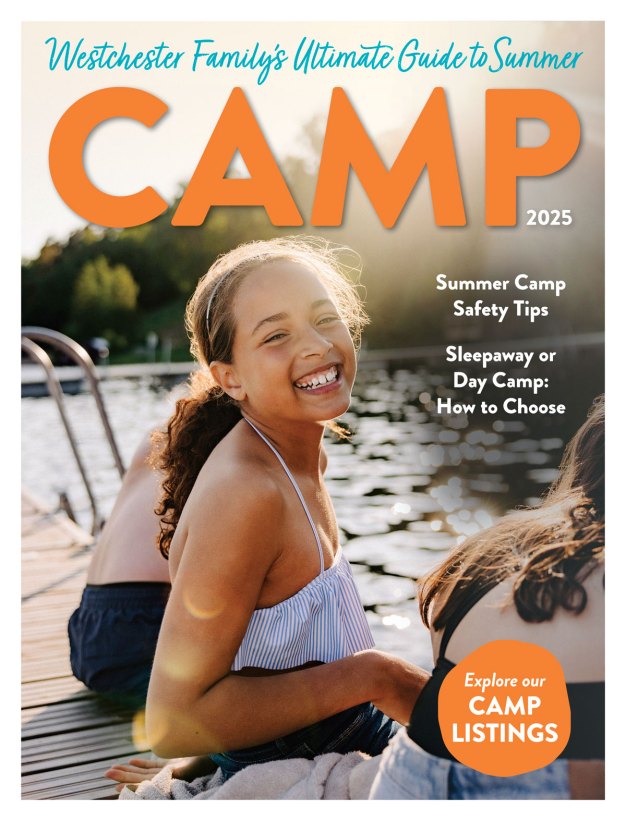Kids Triathlon
Save the date! On Sept. 10, Maria Fareri Children’s Hospital at Westchester Medical Center will be the lead sponsor for the TOUGHKids Triathlon, an event that is a part of the TOUGHKids Triathlon weekend festival. Depending on the age group, the Triathlon consists of swims ranging from 20 to 200 yards, biking from one to five miles and running from 100 yards to one mile. Children ages 4 to 14 can compete at the event held in Croton Point Park in Croton-on-Hudson.
Maria Fareri Children’s Hospital is sponsoring this event to send an important message to parents and youth in our area. The well-documented childhood obesity rates have skyrocketed and the Children’s Hospital sees this triathlon as a way to promote childhood exercise and health.
On Aug. 20 at 8:45 a.m. there will be a TOUGHKids training clinic and course preview held at the race site. The session allows young athletes to learn, train, ask questions of experienced athletes and coaches and also provides a question and answer time for parents. Registration is required for the clinic. For further information and to register online see www.toughmantri.com/ event_toughkids.shtml.
– Mitchell Ostrower
Check it Out Mayo Clinic Takes on Pregnancy
Although the notion of becoming a parent may seem perplexing, mothers-and fathers-to-be no longer need to face those months alone. Mayo Clinic: Guide to a Healthy Pregnancy, by the experts at Mayo Clinic (Good Books, 2011), is a step-by-step manual that answers any questions that prospective parents may have. The book provides insights on topics such as conceiving, choosing a doctor, changes to make as your baby grows, infant care, and everything in between with weekly outlines throughout. Interactive sections such as monthly exercises, progress calendars, narratives from other mothers and how-to’s make learning about pregnancy interesting and ensure a positive experience for you and your baby in the first months of life. With a plethora of detailed photographs and easy to understand diagrams, it will clearly and comprehensively lead you along the ups and downs of pregnancy and become your number one source of advice and “hang in there” encouragement. The trusted advice of the doctors, whose philosophy is “the needs of the patient come first,” will remain with you throughout the exciting process, and if another baby is in your future, even longer. Do what’s best for you and your child with the aid of this must-have manual.
– Sissy Allman
Pediatricians SSay NO to Energy Drinks!
Kids shouldn’t drink energy drinks, and – unless they’re high-level athletes working flat-out for more than an hour at a time – they don’t need sports drinks either. That’s the conclusion of a recent American Academy of Pediatrics report.
Energy drinks contain caffeine (sometimes in massive doses that equal the amount in 14 cans of soda), guarana and taurine – stimulants that have been linked to harmful health effects on children’s brains and hearts.
Sports drinks are a lesser health threat, but have extra calories and sugar that can contribute to obesity and tooth decay, the report concludes. Unless a child is an athlete working for an extended period of time, she doesn’t need the extra carbohydrates, minerals and electrolytes intended to replace water and electrolytes lost through sweating during exercise.
Both types of products are marketed to, and popular among, children and adolescents. And in the case of sports drinks, kids are more likely to be drinking them during a tough bout of Nintendo than a tough day on the practice field.
So how to hydrate? Even during most sports play, doctors say that water is best.
– Christina Elston
Pet Health In Summer Heat
1 Pets need sunscreen. Cats and dogs can get sunburned. Animal sunburns cause the same problems as that of humans: peeling, redness and even cancer. Apply pet-friendly sunscreen to protect the health of your pet when the heat kicks in. Any area where the skin is thin and there is no hair should be protected. Include areas where your dog’s skin is more exposed, such as the groin, abdomen and inner leg areas, the tip of nose, around your dog’s lips and the inside of ears for dogs with standup ears.
2 Never leave your pet in the car. A car trip can be refreshing, but it will probably do more harm than good if you leave your pet in the car for what you think will be a few minutes. The temperature in your car can rise more than 100 degrees in less than 30 minutes. If you take your pet in the car make sure you can take him out on any errands you run when parking the vehicle.
3 Pets need extra water, but … Just like humans, pets need a lot of water during the summer, but be careful not to leave water out too long. The heat can breed bacteria, which can sicken your pet if you’ve left the water out in the sun too long. Give your dog extra water but be careful to change it often. If dogs are extra thirsty, they are bound to drink something they shouldn’t drink. Puddles that look like water may include antifreeze or other dangerous chemicals, so keep an eye when your dog is panting and looking for liquids.
4 Avoid too much exercise. Keep walks to a gentle pace. If your pet is panting excessively or seems exhausted, it’s time to stop. It is important not to overdo it. Try changing the routine or walking in shady areas.
5 Inside is better than outside. Even if your pet is in the shade he can get sick on hot days. As much as he wants to go outside, it is usually smarter to keep your pet inside as much as possible. If you have to leave the dog outside on a hot day, make sure to check on him regularly. Never leave the house on a hot day with the dog outside.
6 Watch for heatstroke. Heatstroke can happen fast. Signs are excessive panting, staring, warm skin, refusal to obey commands by owner, vomiting, collapse and rapid heartbeat. To lower the animal’s body temperature apply towels soaked in cool water to the hairless areas of the body. Often your pet will respond after just a few minutes of cooling, only to falter again with his temperature soaring back up or falling to well below what is normal. Take the dog to the vet immediately – don’t try to solve this yourself.
7 Throw away uneaten food. Although you may leave wet cat or dog food out during the day in winter months, summer months and warm weather lead to increased bacteria growth. If your pet doesn’t eat his food immediately, bring it inside to the cool house where it can be kept out for longer.
Heidi Ganahl is the CEO and Founder of Camp Bow Wow and Home Buddies by Camp Bow Wow.
Banana ‘Nice’ Cream
From Whole Foods Market
Easy as 1-2-3, this creamy, sweet and cool snack or dessert proves that added sugar and oil are not always necessary to satisfy your cravings. Keep some peeled bananas in your freezer so they’ll be ready when you are. To learn how to make this recipe, watch the video on our Whole Story blog. blog.wholefoodsmarket.com/2010/08/fast-fresh-banana-nice-cream-recipe
Serves 2
Ingredients
2 bananas, sliced and frozen
1 cup unsweetened soymilk
2 tablespoons smooth almond butter or peanut butter
Directions
1. Put bananas, soymilk and almond butter into a blender.
2. Purée, turning off the motor and stirring the mixture two or three times, until smooth and creamy.
3. Pour into two bowls and serve.
Nutrition
Per serving (about 9oz/264g-wt.): 280 calories (120 from fat), 13g total fat, 1.5g saturated fat, 0mg cholesterol, 75mg sodium, 38g total carbohydrate (4g dietary fiber, 22g sugar), 9g protein.
Whole Foods Markets are located in White Plains at 100 Bloomingdale Road and in Connecticut at 150 Ledge Road in Darien and 90 E. Putnam Ave. in Greenwich.















